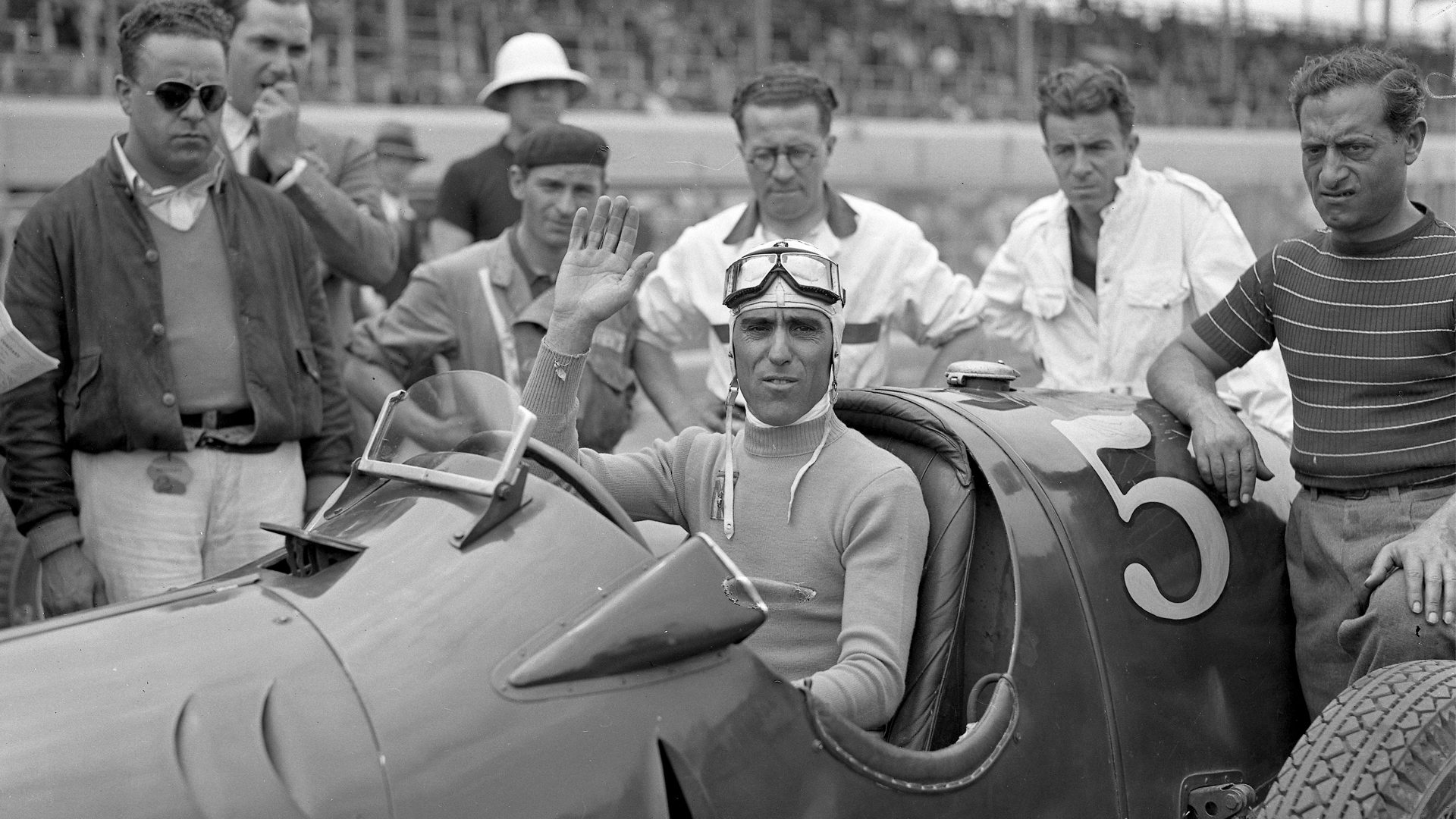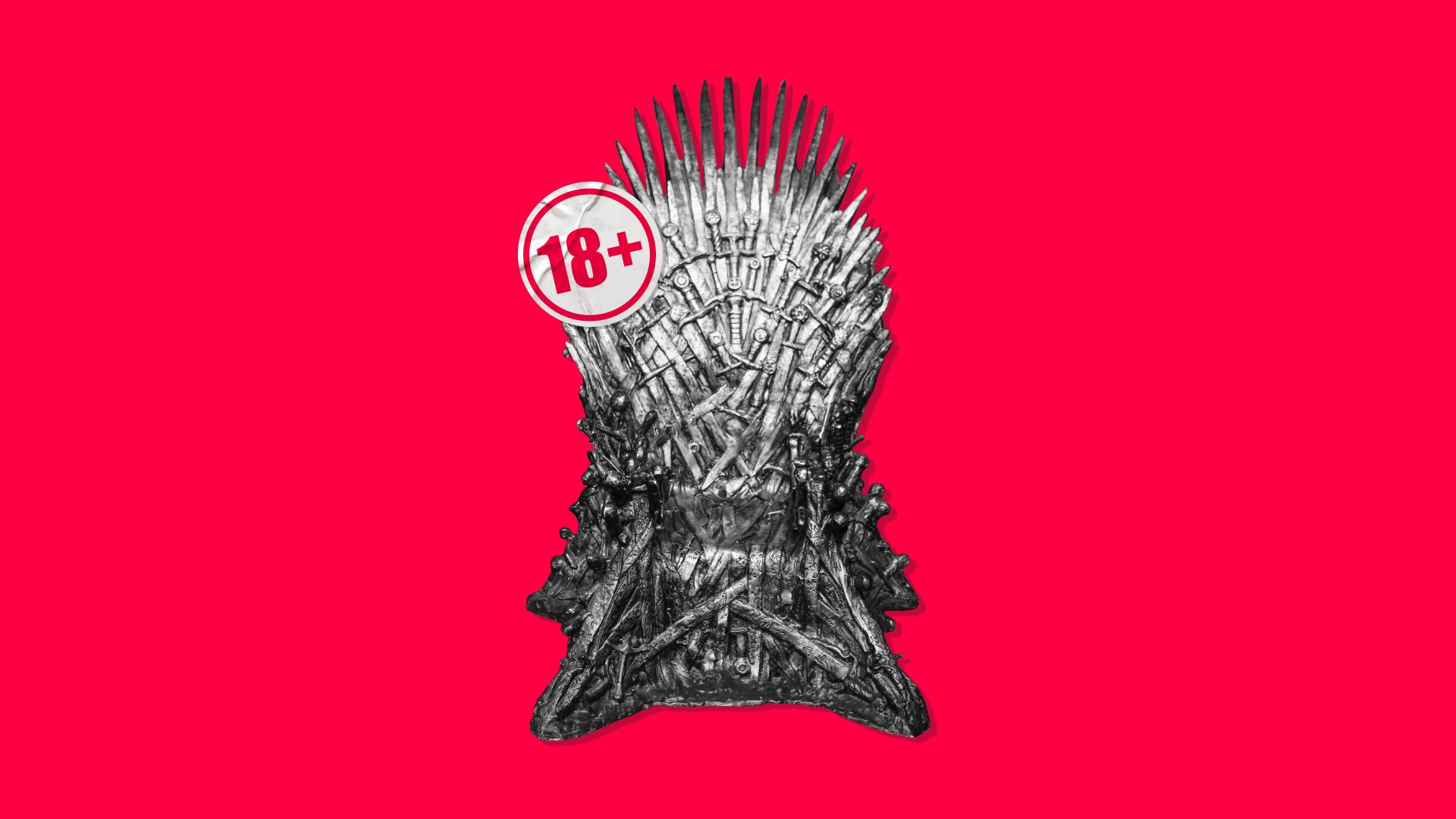In the late afternoon of October 1, 1936, three men stood at the rail of the liner Rex and watched in silence as the skyscrapers of Manhattan loomed ahead of them beneath cloudy autumn skies. At 31, Count Antonio Brivio was the kind of young, rich aristocrat who could indulge himself in sport, wintering in the ski resorts of Europe and spending summers racing fast cars. Standing beside him, a month shy of his 30th birthday, was Giuseppe Farina from a wealthy coachbuilding dynasty who had given up a commission as a cavalry officer in the Italian army to free up time for motor racing.
The third man, barely 1.6m (5ft 2in) tall and slight as a jockey, was by far the oldest of the trio at 43 and hailed not from the same privilege as his companions but from a small village outside Mantua. Born in the 19th century and now sailing into the city that epitomised the 20th, Tazio Nuvolari was a man apart from his companions and location, in status, in age and in the fact that he was the best racing driver in the world. “The greatest of the past, the present and the future,” according to Ferdinand Porsche.
Despite a career interrupted by the second world war, Nuvolari won more than 150 races including 24 Grand Prix, two 1000-mile Mille Miglias and the Le Mans 24-hour race. Not only was he among the best drivers ever to grace
the sport, he was also one of the bravest, enduring countless broken bones, lacerations and burns that would rarely keep him out of the cockpit for long.
Five months before boarding the Rex, for example, during practice for the Tripoli Grand Prix a tyre blew out at 160mph and the resultant crash threw
Nuvolari 100 metres through the air. He was fortunate to land on marshy ground but his injuries, including five cracked vertebrae, should still have
ruled him out of competition for months. The next morning he checked himself out of hospital and that afternoon took his place on the grid.
Nuvolari had travelled to the US for one of his biggest challenges yet: the
300-mile Vanderbilt Trophy at the new Roosevelt Raceway on Long Island. He, Brivio and Farina were there to take on the best drivers in the world in the ultimate test of speed and endurance. Somewhere deep in the ship, nailed into crates, were the bright red Alfa Romeo racing cars in which they would tackle 75 four-mile laps of a difficult, winding track ahead of the strongest field ever to start a race.
Nuvolari’s driving walked the line between skill and recklessness but never crossed it. His remarkable bravery had been forged as a small boy, notably when his father tossed a silver coin between the hind legs of a horse that had just kicked young Tazio in the face and challenged him to retrieve it.
The first world war taught Nuvolari to drive. From dispatch bikes to staff cars he threw a variety of vehicles around the Western Front, including a spell as an ambulance driver. It was when he raced from the battlefield to a hospital with a vehicle full of wounded men, took a bend too fast and ended up in a ditch that the keys were taken from him and he was told to “forget driving” because he “wasn’t cut out for it”.
Before Nuvolari and his teammates could disembark from the Rex there was a press call on board hosted by the Italian consul. The champion hated this kind of thing, especially when it was conducted in a language he didn’t understand. American pressmen fired questions among popping flashbulbs. The interpreter asked whether Nuvolari thought the English and French drivers had a chance of winning. A hint of a smile flickered briefly on Nuvolari’s face and he spoke into the ear of the interpreter.
“Mi aspetto di vincere,” he said. “I expect to win.”
Winning was a habit. He’d begun his racing career on motorcycles in 1920, winning a range of titles. In 1925, a year after becoming European motorcycling champion, he was invited to try out for Ferrari’s motor racing
team only for the gearbox to jam, catapulting Nuvolari through a barbed
wire fence into a field, breaking several bones and causing deep lacerations. Six days later he had himself put in plaster that allowed him to sit on a motorcycle, absconded from the hospital and won the Monza motorcycle grand prix.
At the dawn of the 1930s he switched permanently to cars, winning the
notoriously dangerous Mille Miglia in 1930, the 1933 Le Mans 24-hour race, during which he broke the lap record nine times, and a string of grand prix
wins. A year before the voyage to America he’d pulled off one of the greatest grand prix victories of all time, beating Nazi Germany’s best drivers in bigger and vastly superior cars to win the German Grand Prix at Nürburgring, much to the disgust of the Nazi hierarchy.
On the day of the Vanderbilt Cup race the New York Times published photographs of four of the favourites at the wheels of their cars. America’s great hope Babe Stapp grinned cheerfully, England’s Viscount Curzon eyed the camera uncomfortably and Freddy McEvoy from Australia forced a wide but unconvincing smile. Nuvolari levelled a stern gaze right down the lens, his mouth set in a straight line, daring anyone to even consider beating him.
It was a prophetic image: Nuvolari led the race for every lap except one and that was only because of a pit stop. In front of 50,000 spectators he won by a
full three laps, 12 minutes ahead of his nearest challenger. Any doubt as to the identity of the greatest driver in the world was dispelled that autumn afternoon on Long Island.
There was another characteristic prang at Pau in 1938 when he hurled himself from his burning car on to a grass bank, breaking a selection of
bones, but the outbreak of war deprived him of inevitable further honours – and injuries.
He finished second in the 1947 Mille Miglia, finishing with facial lacerations after a severe hailstorm, and competed again the following year. In a borrowed car, first he lost a mudguard, then the bonnet flew off, narrowly missing him. He reassured his terrified co-driver that this was a good thing as “the engine will cool more easily”. When his driver’s seat came loose he stopped at a greengrocer’s, threw away the seat and bought a sack of lemons to sit on instead.
Despite his disintegrating car, when the race passed through Florence less than 200 miles from the finish, the 56-year-old Nuvolari was a full half hour ahead of the rest. It was only when the brakes began to fail that he finally
admitted defeat. Asked for his reaction at an official event the following day
Nuvolari said just, “I like to drive but I don’t like to talk”.
After he died of a stroke in 1953, aged 60, the coffin carrying the “Flying
Mantuan” was placed on a car chassis and pushed through the city’s streets by the greatest drivers of the day, Juan Manuel Fangio, Alberto Ascari and
Luigi Villoresi. The inscription above the door to Nuvolari’s tomb reads:
“Correrai Ancor Più Veloce Per Le Vie Del Cielo” – “You will race even faster along the roads of heaven.”




